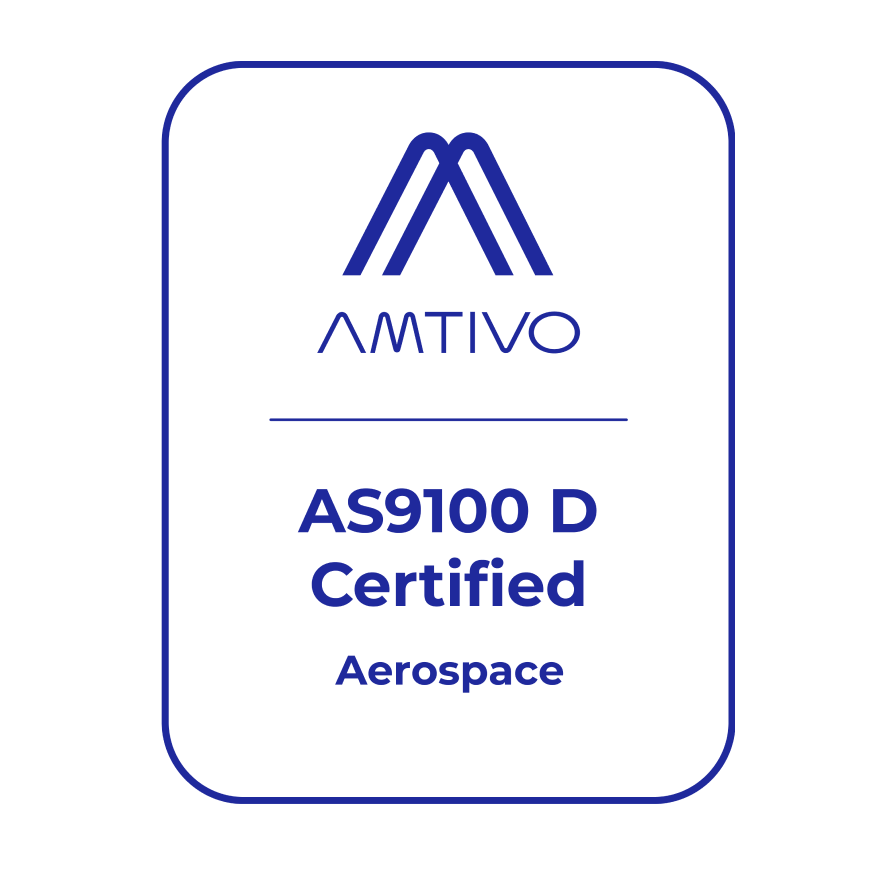
AS9100D is the aerospace industry’s benchmark quality management standard. Built on ISO 9001:2015 and maintained by the International Aerospace Quality Group (IAQG), it adds aerospace-specific requirements that cover design, manufacturing, and service for aviation, space, and defense. In short, it sets a higher bar for how companies plan, execute, and continually improve the work that ultimately flies.
What does that mean in practice? AS9100D strengthens the system around the product: rigorous risk management, enhanced product safety, configuration control, supplier oversight, and end-to-end traceability. It also addresses issues like counterfeit-part prevention and human factors in root-cause analysis—so problems are prevented upstream, not just corrected downstream.
Certification isn’t a one-time badge. An accredited third-party registrar audits our processes against the AS9100D standard and returns regularly for surveillance audits. To keep the certification, we must show disciplined documentation, closed-loop corrective actions, customer-focused metrics (quality, delivery, responsiveness), and tangible evidence of continual improvement.
Why it matters to you: choosing an AS9100D-certified partner reduces risk. You get consistent quality, on-time delivery, and full lot traceability—supported by controlled processes, qualified suppliers, and clear requirements flow-down. For many commercial and defense programs, AS9100D isn’t just preferred; it’s required by primes and Tier-1s because it protects mission readiness, passenger safety, and program timelines.
Our AS9100D certification reflects how we work every day—from contract review and design control to production, inspection, and after-delivery support. It’s a promise that your coatings are produced under a proven system designed to catch issues early, document every step, and keep improving. If you need a supplier who treats quality as a system—not a department—AS9100D is the standard, and we’re proud to meet it.
View UPT AS9100 D Certification
What is RoHS?
RoHS stands for Restriction of Hazardous Substances. RoHS, also known as Directive 2002/95/EC, originated in the European Union and restricts the use of specific hazardous materials found in electrical and electronic products.
What are the restricted materials mandated under RoHS?
The substances banned under RoHS are lead (Pb), mercury (Hg), cadmium (Cd), hexavalent chromium (CrVI), polybrominated biphenyls (PBB), polybrominated diphenyl ethers (PBDE), and four different phthalates (DEHP, BBP, BBP, DIBP).
Why is RoHS compliance important?
The restricted materials are hazardous to the environment and pollute landfills, and are dangerous in terms of occupational exposure during manufacturing and recycling.
View UPT RoHS Compliance Statement
REACH is a regulation of the European Union, adopted to improve the protection of human health and the environment from the risks that can be posed by chemicals, while enhancing the competitiveness of the EU chemicals industry. It also promotes alternative methods for the hazard assessment of substances in order to reduce the number of tests on animals.
In principle, REACH applies to all chemical substances; not only those used in industrial processes but also in our day-to-day lives, for example in cleaning products, paints as well as in articles such as clothes, furniture and electrical appliances. Therefore, the regulation has an impact on most companies across the EU.
REACH places the burden of proof on companies. To comply with the regulation, companies must identify and manage the risks linked to the substances they manufacture and market in the EU. They have to demonstrate to ECHA how the substance can be safely used, and they must communicate the risk management measures to the users.
If the risks cannot be managed, authorities can restrict the use of substances in different ways. In the long run, the most hazardous substances should be substituted with less dangerous ones.
View UPT REACH Compliance Statement









